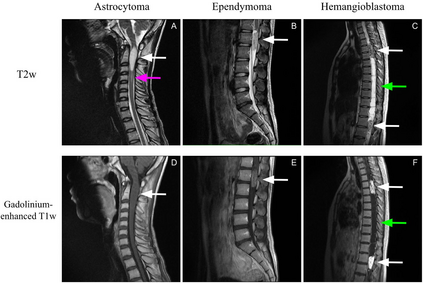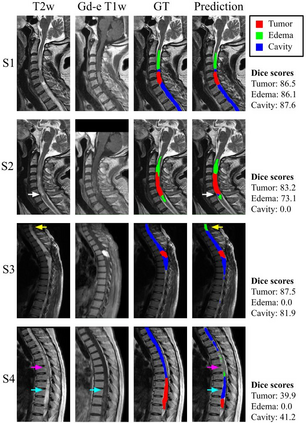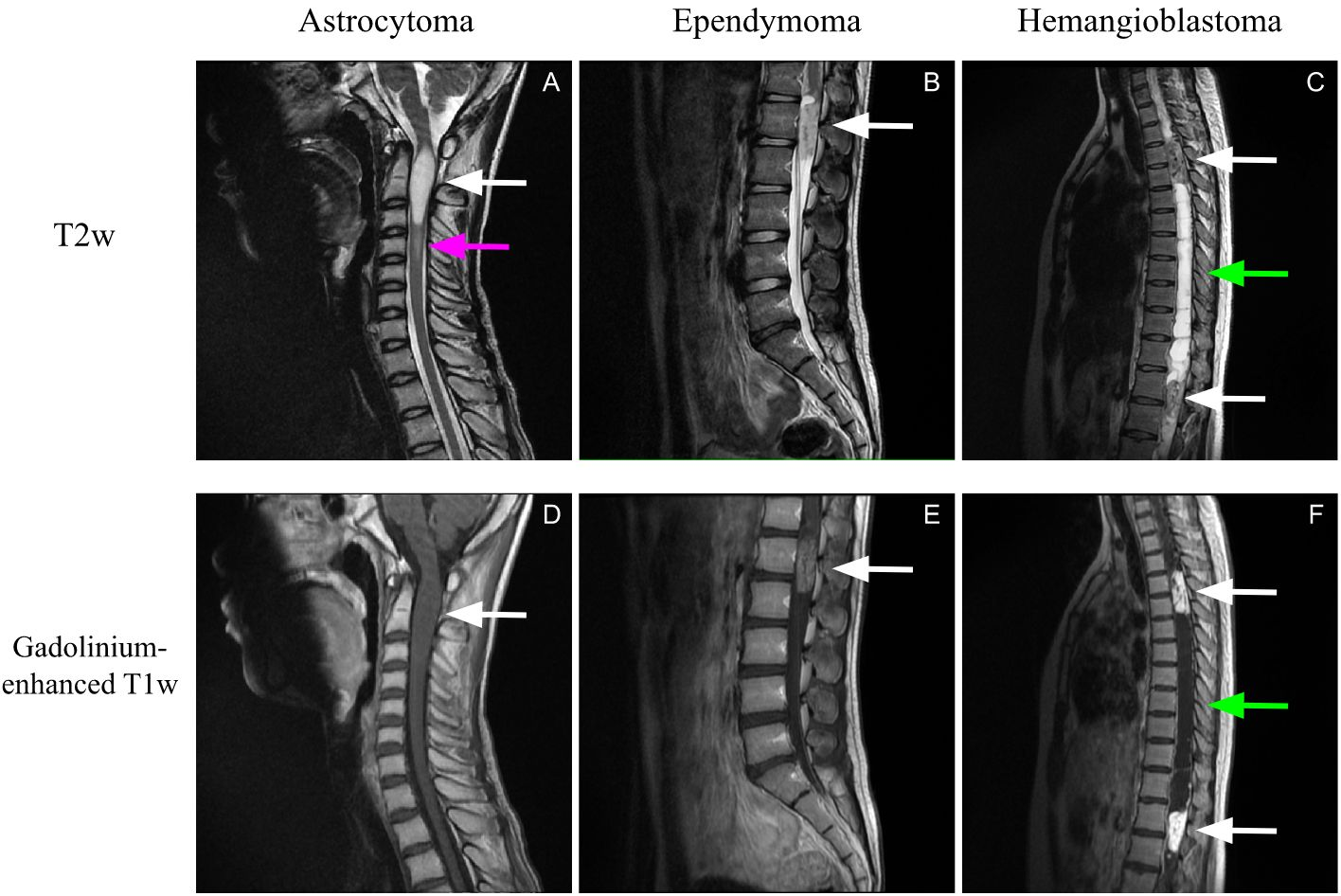Spinal cord tumors lead to neurological morbidity and mortality. Being able to obtain morphometric quantification (size, location, growth rate) of the tumor, edema, and cavity can result in improved monitoring and treatment planning. Such quantification requires the segmentation of these structures into three separate classes. However, manual segmentation of 3-dimensional structures is time-consuming and tedious, motivating the development of automated methods. Here, we tailor a model adapted to the spinal cord tumor segmentation task. Data were obtained from 343 patients using gadolinium-enhanced T1-weighted and T2-weighted MRI scans with cervical, thoracic, and/or lumbar coverage. The dataset includes the three most common intramedullary spinal cord tumor types: astrocytomas, ependymomas, and hemangioblastomas. The proposed approach is a cascaded architecture with U-Net-based models that segments tumors in a two-stage process: locate and label. The model first finds the spinal cord and generates bounding box coordinates. The images are cropped according to this output, leading to a reduced field of view, which mitigates class imbalance. The tumor is then segmented. The segmentation of the tumor, cavity, and edema (as a single class) reached 76.7 $\pm$ 1.5% of Dice score and the segmentation of tumors alone reached 61.8 $\pm$ 4.0% Dice score. The true positive detection rate was above 87% for tumor, edema, and cavity. To the best of our knowledge, this is the first fully automatic deep learning model for spinal cord tumor segmentation. The multiclass segmentation pipeline is available in the Spinal Cord Toolbox (https://spinalcordtoolbox.com/). It can be run with custom data on a regular computer within seconds.
翻译:脊髓肿瘤导致神经系统发病和死亡。 能够通过肿瘤、 水肿和脑腔的肿瘤、 水肿和胃部的测算( 大小、 地点、 生长率) 获得343名病人的数据, 从而改进了监测和治疗规划。 这种量化需要将这些结构分为三个不同的等级。 但是, 三维结构的人工分解耗时费和烦琐, 推动自动方法的发展。 这里, 我们设计了一个适合脊髓肿瘤分解任务的模型。 数据来自343名病人, 使用宫颈、 口腔、 口腔、 口腔、 口腔、 口腔等的肿瘤扫描, 口腔、 口腔、 口腔、 口腔、 口腔、 口腔、 口腔、 口腔、 口腔、 口腔、 口腔、 口腔、 口腔、 口腔、 口腔、 口腔、 口、 口腔、 口、 口、 口、 口、 口、 口、 口腔、 口腔、 口、 口、 骨、 口、 口、 口、 口、 口、 口、 口、 骨、 口、 口、 口、 骨、 口、 骨、 骨、 骨、 骨、 骨、 口、 口、 口、 口、 口、 口、 骨、 口、 骨、 骨、 口、 骨、 骨、 骨、 骨、 骨、 、 、 骨、 骨、 骨、 、 、 、 、 、 骨、 、 、 骨、 骨、 、 、 、 、 、 、 、 、 、 、 、 、 、 、 、 、 、 、 、 、 、 、 、 、 、 、 、 、 、 、 、 、 骨、 、 、 、 、 、 、 、 、 、 、 、 骨、 骨、 骨、 流、 、 、 骨、 骨、 、 、 、 、









